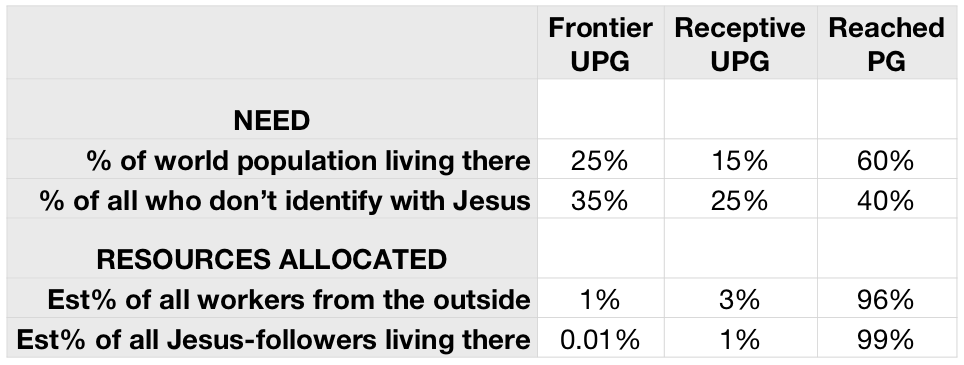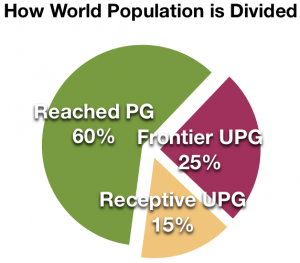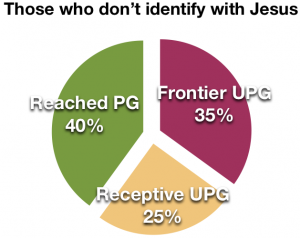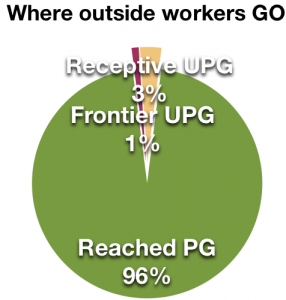The Great Imbalance

Where will you help?

live in Frontier People Groups (FPGs), where:
- The gospel has had no visible impact,
- there is no sustained Jesus movement, and
- on average 1 in 10,000 identifies with Jesus.
These have no contagious community of believing households. There are about 720,000 who don’t identify with Jesus for every outside worker.
live in other Unreached Groups (UPGs), where:
- the gospel has begun to have impact, and
- at least 1 in 1,000 identify with Jesus.
The community of local believers is strong enough to work with missionaries and advocate for their people. There are about 150,000 who don’t identify with Jesus for every outside worker.
live in “Reached” People Groups, where:
- the gospel has had visible impact,
- on average half identify as Christian, and
- many openly follow Jesus.
There is still much work to do here, and plenty who don’t identify with Jesus—about 5,000 for every outside worker.




There are many reasons the vast majority of missionaries (an estimated 97%) end up working among Reached People Groups:
- There are still plenty of people who don’t follow Jesus (on average there are 5,000 who don’t identify with Jesus for every worker from the outside).
- Through more direct contact—such as tourism, business or family connections—believers are often more conscious of the needs.
- The long-term influence of the gospel has improved living conditions so that life and ministry isn’t so difficult for the worker.
- The gospel has also introduced cultural similarities that make life and ministry easier and more enjoyable for many.
Similarly, missionaries and ministries to unreached people groups have many legitimate reasons for favoring a receptive UPG (where a community of believers is already growing). Among receptive UPGs:
- The community of believers becomes an advocate for the needs and opportunities among their people.
(FPGs don’t have this internal advocate.) - The community of believers offers the missionary fellowship, logistical support and language help.
(Missionaries to FPGs have to work this out all on their own.) - Missionaries to more receptive UPGs can fill a wider variety of useful roles.
(Those working among FPGs need to focus on pioneer work—starting the first contagious communities of believing households.) - Missionaries to more receptive UPGs are more likely to be able to report rapid “fruit” and “progress” to their sending base.
(Pioneer mission work generally takes longer to produce visible fruit.)